- Home
- Free Samples
- Managerial Economics
- HI5003 Economic Situation Of Retail A...
HI5003 Economic Situation of Retail and Consumer Goods Business in Australia Assessment Answer

Group Assessment Details and Submission Guidelines | |
Trimester | T1 2020 |
Unit Code | HI5003 |
Unit Title | Economics for Business |
Purpose of the assessment (with ULO Mapping) | 1. Students are required to work in groups of 4 members to choose an industry/Sector of their choice. While working in a specific group, students are required to apply their knowledge learned in the course unit to write an industry/sector report (Learning Outcomes 1, 2, 3, 5). 2. Also, students may choose to work as individual. In this regard, contact the Unit Coordinator specifying that you are working on your Group Assignment as INDIVIDUAL and not group. 3. Finally, students should form their respective groups in the BB as INDIVIDUAL or GROUP. See Assignment Specifications for detailed requirements |
Assignment Specifications
Purpose:
This assignment aims to enhance students’ research and analytical ability through the application of their economics knowledge learned in the course unit to compose a company report.
|
Note*: The structure content is not limited to the items listed above. Creativity for a better report structure is a key requirement.
Detailed requirements of the assignment
You are a group of advisors to the Management Board in your company with Headquarters in Australia. As advisors you are first, required to conduct research on your selected sector/industry covering the previous 5- 10 years. Second, you are required to present a company strategy to your Management Board covering the next 5 years. Third, your Management Board requires that you make a presentation of your findings and strategies, and you prepare a 2,500 word market report. The market report should, as a minimum, address the following key issues:
- A description of your company and the industry your company
- An analysis of the market structure the industry
- A discussion about the demand and supply conditions for your product(s) or service(s).
- A discussion about the demand elasticity for your product(s) or service(s)
- An analysis of a recent event that has (or is likely to have) substantial impacts on your industry/sector.
Note: if your company has many products and/or services, you can select a representative product/service to discuss for points (2); (3); (4); and (5).
This report should provide useful information for your company’s Management Board. It should use a variety of resources, including the textbook, newspapers, industry reports, the ABS website, and other sources.
Furthermore, your report should include headings and sub-headings. It needs to be properly referenced using the Harvard style and at least 5 references.
Australia sector/ industry selection distribution
- Accommodation and Food Services
- Agriculture sector: livestock and meat industry
- Agriculture: fresh foods industry
- Automotive industry
- Aviation Industry
- Banking and superannuation services
- Building and construction
- Construction services
- Education University and tertiary institutions
- Education: Early childhood and education care sector
- Education: Schools education sector (Primary and secondary)
- Education: Technical And Further Education (TAFE) sector
- Energy Utilities Industry
- Engineering and architectural services
- Finance foreign exchange market
- Financial services –Banking sector
- Financial services -Insurance Service
- Fishing
- Forestry
- Gasoline supply services
- Health Care and Social Assistance
- Healthcare services
- Information: internet, radio and television communication
- Information telephone communications
- International trade
- Labour industry
- Leisure and hospitality
- Manufacturing sector
- Media and Entertainment
- Metals and Mining Industry
- Petroleum exploration
- Postal and Warehousing Professional
- Private-for-hire Vehicle Industry in Public Transit
- Property market, Rental, Hiring and Real Estate Services
- Public Transport-Train services
- Recreation/ Hotel and restaurants
- Retail and consumer goods business
- Scientific, Technical Services and Architectural services
- Services industry
- Tourism
- Utilities: Electricity and Gas services
- Utilities: Water and Waste Services
Answer
INTRODUCTION
Economics is the branch of science that studies human behavior as a relation between the close and scare resources that have alternative uses. It deals with the production, distribution, and consumption of products and services that are produced by the company. It is broadly divided into two parts i.e macroeconomics that analyzes the behavior of that aggregate economy, whereas the other one is related to the microeconomics factors that aimed at individual consumers or firms (Prokhorova and et.al., 2016). Therefore, this project reports intend to provide vital information regarding the economic situation of the Retail and consumer goods business in Australia. Apart from this, the strategy used by the company to increase its market position in the future is also being the highlight of this report. However, all those factors that are influencing the demand and supply of the company’s products are also being discussed in this project.
Introduction to the company
Woolworth group ltd is one of the leading Australian retail interests in different parts of Australian. It is known as the second-largest firm in Australia in terms of revenue. It was founded in the year 1924 by Percy Christmas. Woolworth deals in various divisions such as supermarkets, general merchandise, finance, and hotel sectors. It reason behind its success because of this earning capacity of the company as A$59.98billion with a total income of A$2.326billion respectively till FY2019. It has 205000 numbers of employees who are working efficiently with the company’s different stores and manage the operations accurately (Grim, Clark and Snyder, 2014). The primary objective of this company is to improve the stock as well as optimize the network effectively by ensuring that its consumer should get reliable services and products. The business is being served in almost 800 stores that are found on Main Street across the entire Australia market. Woolworth also means that clients would have a high capacity of products that can provide minimum prices because of the high turnover. It has also made huge investments in reducing the prices to regain its cost position and the client perception that is more costly than the competitors. The main strategy of Woolworths is to provide products to the right people as well as obtain sustainable sales and profitability in the future.
Industry background
The retail industry in Australia is getting the maximum population since 2007. The total turnover of retail sectors are contributing to the economy is around 329.6billion till 2019. It has been identified that almost 140000 retail companies are operating in Australia which amounted to 4.1% of total GDP as well as 10.7% on creating employment. The retail sectors have been a wide diversity in terms of size, region, retail format, and competition within the entire organization. However, it has met plenty of competitive challenges in the last couple of years. With the introduction of online retailing and entry of new innovative market are also getting maximum populating in the country (Boons and et.al., 2013). Moreover, Australia is also tending to appear as a lag to the number of comparable nations in its development of online sectors. It has best estimated for the online retailing margin of 6% of total retail sales and also made 4% domestic sales. Throughout the last decade, retail sales as well as employment has continued to expand despite challenging economic situations that exist in Australia. According to the NRF reports, the retail sales in 2020 would be increasing between 3.5 to 4.1% to more than $3.9trillon. 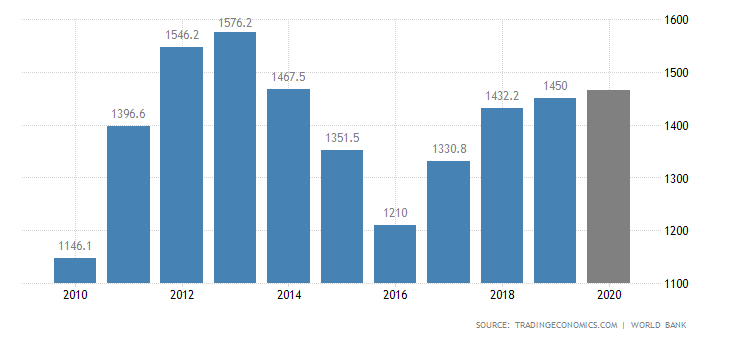
It has the best eFig: Growth of retail sectors in the last couple of years in Australia
(Source: Trading economies, 2019)
From the above chart, it has been seen that the GDP growth rate of retail sectors is getting maximum popularity in the previous 5 years. It happens to be equal to the total expenditure for all the final products and services manufactured within the nation in a stipulation period. The retail sectors have registered a growth margin of 5% and 2.6% in the other regions of Australia also.
Market structure of the industry
It has been determined that the retail market structure generally refers to the number of companies that are selling similar products in the same geographical areas of Australia. However, an oligopoly intends to describe a small group of the retail industry that can collude to increase the price of products because of the large demand. The legal laws that widely impact the competition in the Australian retail industry in the competition and consumer act 2010. This act tends to include provisions that can prohibit According to this particular act, the purpose or effect of substantially lessening competition consists of mergers or acquisition as well as to conduct like exclusive dealing as well as resale price control (Amatori and Colli, 2013). The retail industry tends to characterized as very wide and heterogeneous in terms of the retail sector. The growth of online retail is developing a range of diversity across the entire retail industry. It will be impossible to examine nature to carry out a comprehensive competition evaluation that can cover all the retail sectors as well as the region. For the grocery sector, the market share of top retailers like Woolworths has held the top two retailers as higher in some other nations.
With regards to the Australian retail or grocery sectors, it illustrated the Coles for several retail products group which is amounted to 70% for the groceries to 50-60% for dairy and commercial use. Apart from this, it has approximately 50% for fresh vegetables and meat and up to 50% for the other fruit or bakery items. However, the market concentration entirely relies on the definition of market consumption which is captured by the retail market in Australia. Concerning the retail sectors, the entry of new major global players in the grocery segments such as Costco and Ald, it also provides potential barriers to the entry of the substantial growth market (Acemoglu, 2012). Apart from this, the growth of online competition is also reducing the influence of existing barriers to entry in the retail sectors. It has been estimated for the online retailing margin of 6% of total retail sales and also made 4% domestic sales. Throughout the last decade, retail sales as well as employment has continued to expand despite challenging economic situations that exist in Australia. According to the NRF reports, the retail sales in 2020 would be increasing between 3.5 to 4.1% to more than $3.9trillon.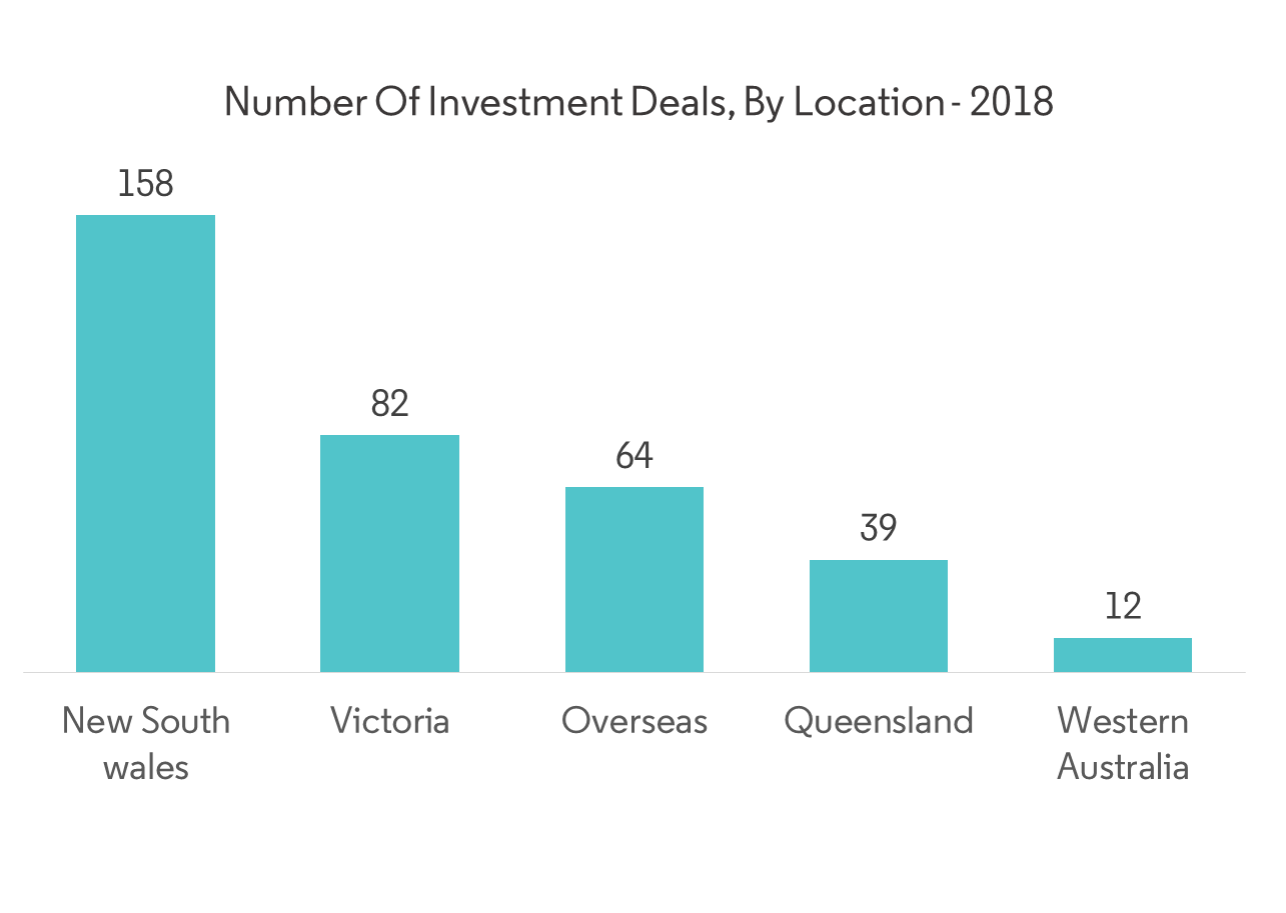
(Source: Australia retail sector, 2018).
From the above graph, Australia’s retail sales grow up to 3.7% each year till 2018. This sector is getting maximum popularity because of various segments on the basis of various product range, distribution network, and market size. It is one of the most urbanized societies in the entire nation with almost 24million people living in urban areas. Australia registered a valuable high per capita, value regarding USD50000. The food and grocery segments witnessed the potential growth that is driven by the leisure market trends.
Woolworth market strategy for the next 5 years
In the coming 5years, it has been seen that the Woolworth has planned to increase its market share with 4.1% in each years on the total sales of products. The company is also planning to open more stores and branches of the grocery stores in different location of the Australian market. It can assist them to gain a competitive advantage over the other firms that are already operating in the same production line.
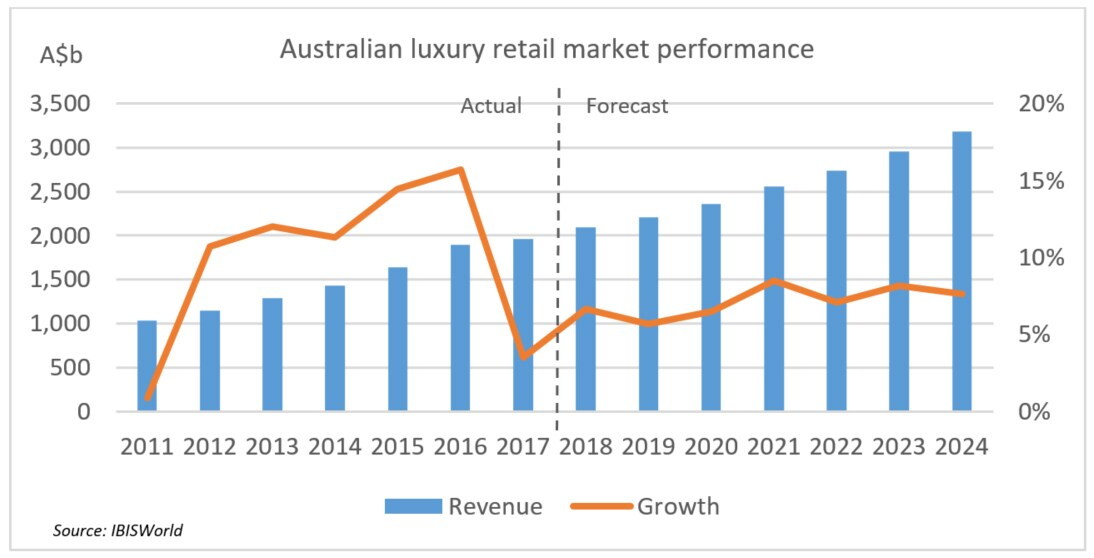
Fig: 5year estimation of retail business growth
(Source: IBIS reports, 2019)
From the above chart, it has been seen that the entire retail industry is growing with a constant rate in the coming few years. Therefore, the decided for the expansion of Woolworth is also more profitable to generate a reliable profit in the future and gain a strong market position in the Australia.
Factors that influence demand for the company’s product
It has been seen that the demand for products gets affected because of various factors. The economic factors that might influence the demand for consumer goods are affecting the business growth of the firm within the entire Australian market. However, it has been determined that the market demand tends to describe the demand for a given good as well as wants to buy it. Moreover, it would examine through the perception of the willingness of customers spending on a particular product and services (Posner, 2014). Some of the key factors that are influence the demand for grocery products are mentioned underneath:
Income level: It has been seen that the demand for a product that is manufactured by Woolworth groups tends to affect by the income level of the consumers. It can influence because of the change in income level relies on the nature of the commodity under specific consideration. In the case goods are having normal goods, then an increment in total income leads to an increase in its demand, whereas it would reduce if the income decreases.
Consumer taste and preference: According to the factors, the taste and preference of the client directly impact the demand for manufactured goods. They intend to changes trends, customs, and habits, etc. In this case, a product within a fashion is being preferred by the client, then demand those products increase. However, the demand for a product decreases, if the customers have no taste for those goods (Bowen and Sosa, 2014).
Price: With regards to the valuable factors that are influencing the demand for the given products, it generally exists as an inverse relationship among the price and demand. It simply means that in case the price increases, the quality of the products get reduced because of the diminishing level of customer satisfaction. For example, if the price of milk produce by Woolworth increases, the quality demanded gets reduced because the satisfaction intends to derive from tea would be decline to the growing cost.
Competition: The retail firm Woolworth has facing tough competition with some of the major retail stores such as Aldi and Costco. It is associated with certain factors like the number of sellers, barriers to market entry, information availability, and location. Thus, it is important to produce reliable products that can assist the firm to reach its target customer effectively.
Factors that influence the supply of the company’s product
In the current market, the situation prevails in the Australian market; there are various key factors that can determine the supply of products. However, a change in any of these factors would result in a heavy change in the supply of the product and services that are supplied by the Woolworths groups to its customers. Supplies intend to be considered as a fundamental aspect that can determine the total amount of a particular product and services that are available to the customers (Rahman and Subramanian, 2012). Most of the economist examined that the supply, as well as demand, can help the firm to understand the different influence that can drive the Australian economy positively. However, the factors that can influence the producer's supply can cause the market supply curve shift. Some of the key factors are mentioned below:
Cost of production: It tends to imply that the overall supply of a product will reduce with the growing cost of production. The supply of goods is inversely associated with each other. For example, a seller Woolworth will supply a minimum quantity of goods in the market, when the cost of manufacturing exceeds the market cost of the goods and services.
Natural condition: These factors are entirely related to the natural situation that is directly associated with the supply of products which are manufactured by the Woolworths. For example, the supply of any agricultural goods increased in the monsoon season. Therefore, the supply of these products reduced at the time of any natural calamities.
Technology: It has been seen that technology tends to play an important role in the overall supply of the product and services of an organization. It is considered as one of the key factors in the supply. An advance technology growth can help the Woolworth to increase the supply of products into the consumer markets (Cashin and et.al., 2014).
Government policies: In the case, the legal regulations of Australia get changes; it can directly impact the overall supply of the products. However, fiscal and industry policies have a huge influence on the supply. For example, the growth in tax on excise duties will also reduce the supply of goods that are supplied by the Woolworths. Similarly, if the tax rate gets too low, then the supply of goods gets increased drastically.
Elasticity
In the economic situation, elasticity should be measured as the percentage variation of one economic variable would be a response to a change in other. The welfare effects of the new range of consumers to substitute between the varieties of products offered by the Woolworth group. This willingness to the substitute between the products could be measured as elasticity of substitution. It suggests that the reliable retail goods, the elasticity of goods is higher than the unity (Weiner, 2012). It has been seen that a product to be more elastic in case the demand of goods changes at the time price goes high or low. It is categories into two segments such as:
Price elasticity of demand: It tends to measure the responsiveness of the client with the change in the total cost of production. In case the price of grocery items of Woolworths get increased the quantity demanded for the same would also be high. It is directly related to the change in the elasticity of the substitute products.
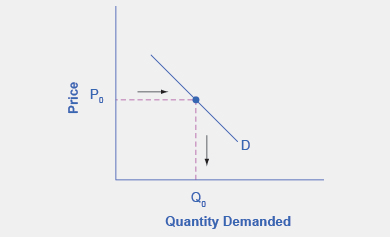
Price elasticity of supply: In the economic term, it is said to be the percentage of changes in the total quantity supplied should be divided with the changes in the price level of a product. However, the Woolworth milk or grocery items price get increased, the supplied for the same get reduced because it is inversely related to the each other.
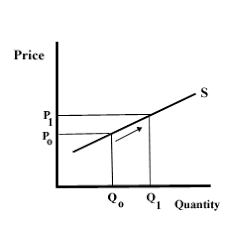
Impacts of an event on the industry
According to the current Coronavirus pandemic, the entire retail market of Australian sales has reduced by 22% in the last couple of months as compared with the same time. It marginally declines with 23.7% since the previous year. In the recent couple of weeks, sales growth across the Woolworth group’s retail businesses has been quite strong. As it reflect unprecedented demand for the range of products as client have consumed more at home and stocked it within the pantries. Woolworth tend to seen a sharp jump in the demand for its pantry products with a long shelf and different commercial staples recently. It has results in the partial shortage of inventory across various stores. The downfall of export demands for goods that have to increase local supply, placing low price pressure on certain consumable products (Imbs and Mejean, 2015). For example, the seafood cost has reduced the demand for the export market along with the food services sectors. Woolworth retail sales are also expected to show a negative impact on the demand for wool and other consumer goods production. Apart from this, it has expected the loss to a slight further this year, but also flagged A$100 million non-cash destruction due to overcast outlook. However, the federal government has decided to fund$110 million freight as a subsidy to assess the industry exports with the reduction of various import and exports of goods and services.
CONCLUSION
Throughout the entire project report, it has been articulated that the economy is a wide concept that can be effectively applied to the economic sectors. Therefore, it is important for the researcher to have well-organized information regarding the key factors that can influence the demand and supply of products and services to the country. However, the implication related to the retail industry in Australia is also being related to being examined effectively so that chances of future growth can be maintained at a high level.










